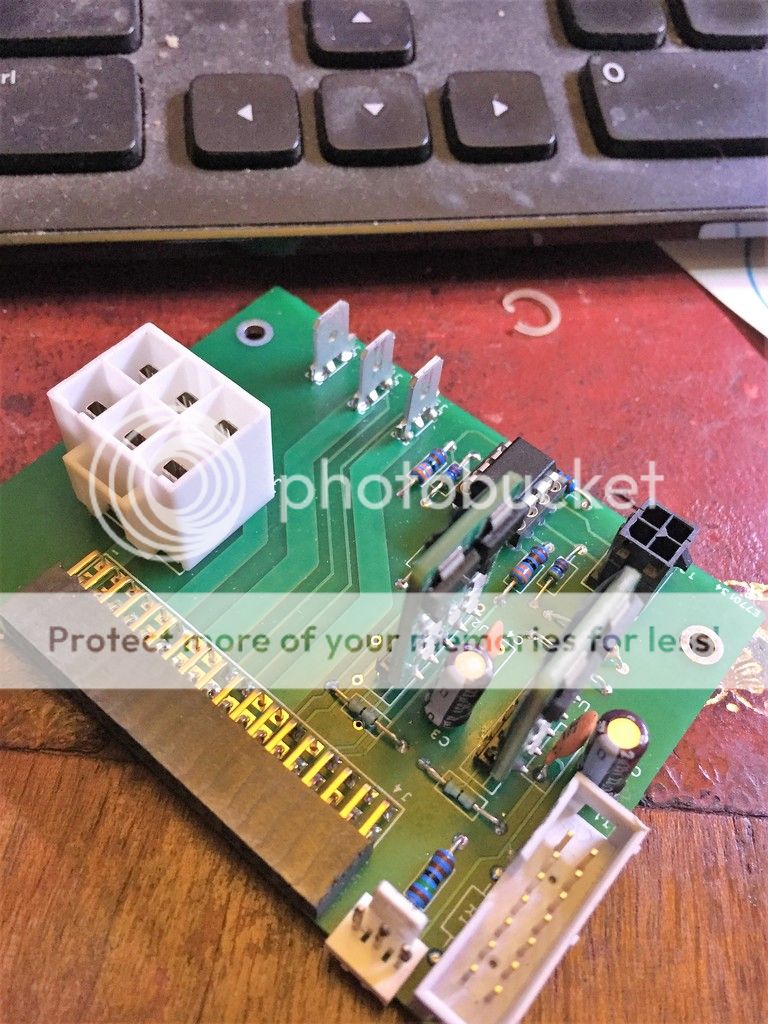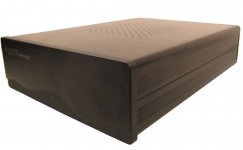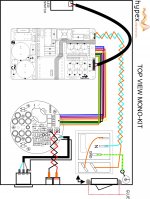Yes, the platform is dedicated for audio, with a tweaked down OS installation. Only extent of internet access is for streaming audio.
Yes for DIY folks, a PC based active loudspeaker is most flexible and capable.
For an OEM trying to make an active loudspeaker product, embedded DSP probably makes more sense
Unless you use a rock solid realtime OS like Masscore. Then it's as rock solid as a DSP chip.
I wouldn't recommend running a commercial system off Windows or OSX.
You don't want to use the same PC you do your daily internet browsing on for this task. You install a clean OS, and dedicate it for DSP duties.
Unless you use a rock solid realtime OS like Masscore. Then it's as rock solid as a DSP chip.
I wouldn't recommend running a commercial system off Windows or OSX.
So what is "PC" about it then?
What you are talking about is a dedicated, embedded computer - just one based on a general-purpose architecture rather than a DSP processor.
Can you explain why the type of processor makes a difference to noise and jitter? Do you have numbers to support that assumption? The fact that a dedicated DSP platform doesn't need to deal with the extremely high frequencies of video etc. actually helps make them quieter. The higher-end dedicated DSP processors work at 64-bit floating point - does an Intel-based PC offer higher precision than that?Embedded chips also add noise, jitter, and are limited in resolution.
Try finding anything at all, hardware or software, that can do DSP (beyond simple scaling) in 1-bit native DSD. There is a reason pretty much all DSP packages convert 1-bit DSD either to multi-bit "PCM-wide" (which is really PCM with noise shaping) or DXD (24-bit, 352.8/384 kHz PCM) and back.Try finding a DSP chip that can preform DSP to a 1 bit Native DSD signal, without conversion to PCM.
So what is "PC" about it then?
What you are talking about is a dedicated, embedded computer - just one based on a general-purpose architecture rather than a DSP processor.
Can you explain why the type of processor makes a difference to noise and jitter? Do you have numbers to support that assumption? The fact that a dedicated DSP platform doesn't need to deal with the extremely high frequencies of video etc. actually helps make them quieter. The higher-end dedicated DSP processors work at 64-bit floating point - does an Intel-based PC offer higher precision than that?
Try finding anything at all, hardware or software, that can do DSP (beyond simple scaling) in 1-bit native DSD. There is a reason pretty much all DSP packages convert 1-bit DSD either to multi-bit "PCM-wide" (which is really PCM with noise shaping) or DXD (24-bit, 352.8/384 kHz PCM) and back.
Well the same hardware of a "PC" can do it. But yes it would be turned into a dedicated engine.
All you have to do is look at the noise and jitter specs of what's on the market for chip based DSP, to see what I'm talking about. None of these DSP boxes like DEQX have specs to match the best stand alone DAC's to my knowledge. And yes we finally have 64bit floating point processing in the new SHARC 589 chip. But still not much power compared to Intel CPU's.
HQplayer can apply DSP to DSD. It converts the DSD into Multibit DSD to apply the DSP. The same way DAC chips like Sabre do to control volume on a DSD signal.
So I assume there is no silly licence manager stuff that nails it down to a specific PC (or OS version)?....
I think its rather you being silly bashing a companies particular way of doing business. If you don't like or can't afford it, find an other product.that suits your needs and budget. Silly - no!
//
I think its rather you being silly bashing a companies particular way of doing business. If you don't like or can't afford it, find an other product.that suits your needs and budget. Silly - no!
Fair enough - but the "silly" referred to licence managers that tie you down to a specific installation - and it has nothing to do with being able to afford it. What I don't want is being dependent on a depreciated, "sorry, not supported" environment - something all too familiar for users of Windows 98 or Vista.
Well the same hardware of a "PC" can do it. But yes it would be turned into a dedicated engine.
And preferably without display controllers, hard disks etc.
I think we are mixing up two separate things. You can't compare a full DSP chain (feeding a built-in DAC, and possibly containing an ADC step) with just a stand-alone DAC. They don't perform the same function. Do you have comparisons of jitter and noise performance of a PC, running DSP operations, feeding a DAC, compared to a stand-alone DSP box?All you have to do is look at the noise and jitter specs of what's on the market for chip based DSP, to see what I'm talking about. None of these DSP boxes like DEQX have specs to match the best stand alone DAC's to my knowledge.
True. It is a trade-off - do you want a small, low-power, low-noise dedicated box with enough power for "normal" DSP, or a very flexible, powerful, power-hungry and noisy general purpose computer. It all depends on your application.And yes we finally have 64bit floating point processing in the new SHARC 589 chip. But still not much power compared to Intel CPU's.
Precisely. You either do (multiple) conversions/resamplings between 1-bit and multibit, or you do a conversion to PCM (DXD) and back, because you can't do DSP in 1-bit.HQplayer can apply DSP to DSD. It converts the DSD into Multibit DSD to apply the DSP. The same way DAC chips like Sabre do to control volume on a DSD signal.
It looks very neat and tidy, assume that is a LM4562 in the 8 pin socket.Are you all Christmas shopping?
Rev A buffer board arrived back with me, will not have chance to test till weekend, busy building customers amps.

Looking forward to hearing your views on the different op amps. Of course with the uprated Hypex regulators I suppose it could sound better even with the standard LM4562.
Looking forward to hearing your views on the different op amps.
Not to mention double-blind listening tests 🙂
Well I am initially only interested in views. I will make up my own mind about the buffers and different op amps when I get them.Not to mention double-blind listening tests 🙂
Last edited:
Well I am initially only interested in views. I will make up my own mind about the buffers and different op amps when I get them.
So what is the point of the views then?
I like to hear/know what other people think and what their views are.So what is the point of the views then?
I make my own mind up as to what I like and dont like.
I like to hear/know what other people think and what their views are.
I make my own mind up as to what I like and dont like.
How dare you 🙂
I also like to hear the 'Group think' and then make up my own mind as to whether I believe it or not 🙂
Last edited:
I like to hear/know what other people think and what their views are.
I make my own mind up as to what I like and dont like.
Fair enough, I just prefer to use my ears.
You have ears? 🙂
Of course not. Just like a lot of other people, I rely on my eyes, (and audiophile web sites) to know what sounds good.
ExactlyI also like to hear the 'Group think' and then make up my own mind as to whether I believe it or not 🙂
Your learningOf course not. Just like a lot of other people, I rely on my eyes, (and audiophile web sites) to know what sounds good.
NCore NC400 DIY kit
So at Hypex we wanted to make DIY-ing a bit more accessible and we came up with this:
https://www.hypexshop.com/DetailServlet?detailID=7616
It is a complete kit with everything included: NC400, SMPS600, Hypex case, cables and connectors. Tell me what you think and feel free to contact us at sales@hypex.nl
Cheers!
So at Hypex we wanted to make DIY-ing a bit more accessible and we came up with this:
https://www.hypexshop.com/DetailServlet?detailID=7616
It is a complete kit with everything included: NC400, SMPS600, Hypex case, cables and connectors. Tell me what you think and feel free to contact us at sales@hypex.nl
Cheers!
Attachments
- Status
- Not open for further replies.
- Home
- Amplifiers
- Class D
- Hypex Ncore


